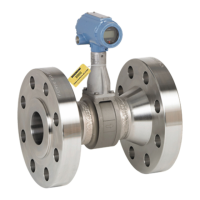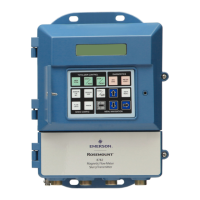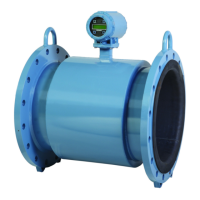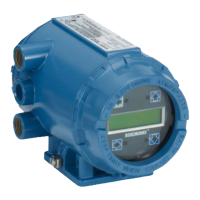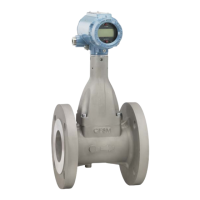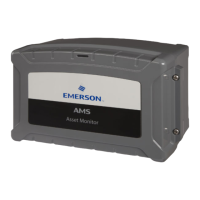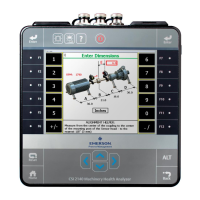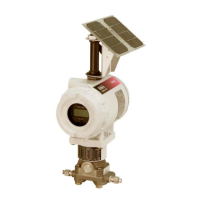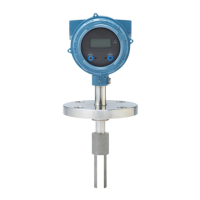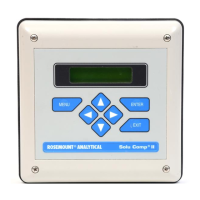Rosemount Model 8800C Vortex Flowmeter
4-4
Symptom Corrective Action
Flow in Pipe,
Incorrect Output
Basics
• Perform basic checks for Incorrect 4–20 mA
Output Problem (see Incorrect 4–20 mA Output
on page 4-3).
• Check and correct configuration parameters in
this order:
K-factor, service type, materials, units, process
temperature, damping value, 4–20 mA trim,
meter body number, density, pulse mode, pulse
scaling, line size, pipe diameter, LRV, URV, LP
corner, trigger level, and low flow cutoff.
• Check sizing. Make sure flow is within
measurable flow limits.
• Refer to Advanced Troubleshooting on page 4-6.
• See Appendix E: Electronics Verification for
electronics verification procedure.
Application Problems
• Calculate expected frequency. If actual frequency
is the same, check configuration.
• Check to make sure the meter is not installed
backwards (Arrow on meter pointing upstream is
backwards). Re-install the meter if necessary.
• Check that application meets viscosity and
specific gravity requirements for the line size.
• Recalculate back pressure requirement. If necessary
and possible, increase back pressure, flow rate, or
operating pressure.
• Check for gasket or other obstruction disturbing
flow. Reinstall meter if necessary.
• Pump pulsations disturbing flow. Adjust signal
processing parameters.
Vibration Problem
• Adjust signal processing parameters.
• Rotate meter 90 degrees.
• Add support to the line near the meter to damp
the vibration.
When the vortex meter is set for gas or steam service
and the vibration levels are greater than ½ g, the Low
Flow Cutoff value (LFC) may need to be increased to
eliminate undesirable output at no flow conditions.
The level of LFC increase depends on the vibration
level and meter size. LFC is unique for each
application. When flow begins, the flow signal
becomes much larger than the vibration signal and
the meter will lock onto the flow signal and give an
accurate flow output.
50/60 Hz Measurement
• Make sure electronics mounting screws (3) are
securely installed.
• May indicate electrical or magnetic interference.
Check meter ground. Measure voltage levels
between 4–20 mA and pulse outputs and the
electronics housing. Common mode
voltage < 30 Vrms.
• If the meter is located near a large motor or
electric furnace try different meter orientations to
reduce the noise. Magnetic fields must be less
than 5 gauss.
• In remote mount installations, try integral mount
to see if problem is corrected. Measure ac
voltage from electronics housing to SMA
connector. The voltage must be <1Vrms.
Sensor
• Sensor should resist removal because the
interference fit has extremely tight tolerances.
Repeated removal and installation of the sensor
will loosen it. If sensor is loose, replace the
sensor.
• Inspect and tighten sensor connector if
necessary.
• Inspect coaxial sensor cable for cracks. Replace
if necessary.
• Check torque on sensor nut (32 ft-lb).
• Check that sensor impedance >10 Megohms.
Replace sensor if necessary (see Replacing the
Sensor on page 4-15).
• Measure sensor capacitance at SMA connector.
(100–200pF)
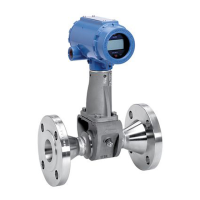
